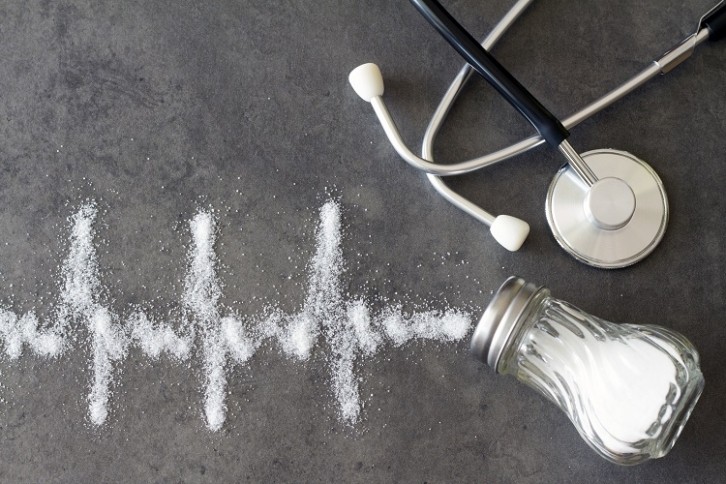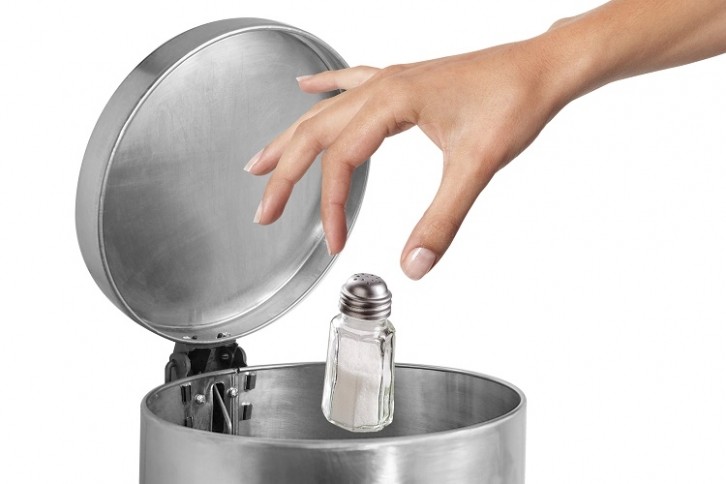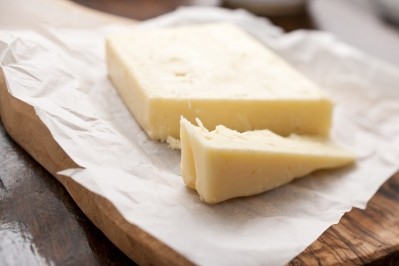How is the food industry tackling salt reduction?

The relationship between food production and salt is complex. For years we’ve been told by chefs, who liberally throw handfuls of salt into their dishes, that seasoning with salt equals flavour. Coupled with that, the food industry has long produced products with a high-salt content, again with the reason of adding flavour, as well as for additional purposes such as preservation and thickening.
However, more recently, the dangers of a high-salt diet have become better understood and we’re now being told that salt should be used much more sparingly. So how is the food industry reducing salt in food products and what more can be done to ensure healthy levels of salt are present in food products?
What are the dangers of consuming too much salt?
According to the World Health Organization (WHO), “almost all populations are consuming too much sodium.” The current recommended daily intake of salt is less than 5 grams per day for adults. However, the actual daily intake is in fact more than double that at approximately 10.78 grams per day.
A high-salt diet has been associated with a number of serious health issues, including high blood pressure, increased risk of cardiovascular diseases, gastric cancer, obesity, osteoporosis, Meniere’s disease and kidney disease. Furthermore, the WHO estimates that there are around 1.89 million deaths per year linked to the consumption of too much salt.
“Reducing sodium intake is one of the most cost-effective measures to improve health and reduce the burden of non-communicable diseases,” says a spokesperson for the WHO.
How are manufacturers reducing salt in our food?
The current salt content of common store cupboard staples, including tinned foods, breakfast cereals and bread is high however, “it doesn’t have to be this way,” said Amanda Shiach, research assistant & patient and public involvement coordinator at Queen Mary University of London, at the recent Nature Forum ‘Reducing Salt in our Diets’ event. “We can eat amazing food but with less salt in it. Less salt equals less harm. Strong and clear evidence consistently shows that reducing salt consumption reduces blood pressure and death by cardiovascular disease.”
However, there is good news on the horizon as previously enforced salt-reduction measures have already provided positive results.
“The totality of the evidence is absolutely overwhelming, with more than a hundred randomised controlled trials, with physiological studies, epidemiological studies, migration studies, multiple population studies, including the UK’s own salt-reduction programme over the last 20 years. We’ve seen the reduction of salt in food and that has led to a decrease in blood pressure across the population and a decrease in cardiovascular disease and deaths,” adds Shiach.
So how were these salt-reduction targets set for UK food production and how were they implemented?
“The UK was one of the first countries to implement a comprehensive salt-reduction programme and it was pioneered by the Food Standards Agency,” says Sonia Pombo, campaign lead for Action on Salt. “They came up with a multi-faceted approach. There was a lot of collaboration with the likes of the Food and Drink Federation, food retailers and manufacturers, but also with health professionals and NGOs like [Action on Salt]. So, this developed a really comprehensive programme that had a number of different things, including salt-reduction targets across nearly 80 different categories of food, and they worked with the food industry to better understand what the salt content was for these foods? And how could we get that down?
“They set really achievable targets and they gave businesses a reasonable timeframe in which to achieve these. And they really built engagement with food businesses to better understand where the challenges were. But also, where there were successes, if there were significant reductions of salt in foods, how could we get those levels down even further?”
Innovation in salt reduction
“Innovation is going to be critical in salt reduction,” says Jack Bobo, director of the Food Systems Institute at the University of Nottingham. “But it’s hard because consumers love innovation almost as much as they despise change. And there’s no place people despise change more than in the foods they eat, because food is what brings us together with friends and family. So we do have an enormous challenge."
However, one form of innovation in salt-reduction is the use of potassium-enriched salt as a replacement for more commonly used salt products.
“Potassium-enriched salts, also called salt substitutes low-sodium salt, where a proportion of sodium chloride is replaced with potassium chloride,” explains Claudia Selin Batz, policy and advocacy advisor at The George Institute for Global Health. “Our research has found that this is a suitable approach for both mitigating the adverse effects of excessive sodium consumption but also increasing potassium consumption.”
But would consumers be able to taste the difference when consuming potassium-enriched salts? It appears not.
“They taste very similar to regular salt,” says Selin Batz.
However, availability of potassium-enriched salt is a problem, with very few shops currently stocking it.
“Availability is a key issue,” adds Selin Batz. “We have one brand of potassium-enriched salt, ‘LoSalt’ and it’s not necessarily available in corner shops, it’s more supermarkets so we really need to address that.”
What more can be done to reduce salt in food production?
Governments across the globe are already acting on research highlighting the dangers of a high-salt diet. However not all governments are implementing legislation to reduce the salt content of the foods produced in their countries.
“There is a mixed scorecard,” explains Shiach. “But there does need to be level playing field. A whole range of options are available to governments in terms of policies. They can monitor, they can set targets, they can focus on processed foods or out-of-home foods, they can change the salt supply.”
Coupled with this, it’s important to help consumers to understand the reason for salt reduction in food and how they can go about reducing the salt they use in the foods they prepare at home.
“Consumer education has value, particularly in populations where more discretionary salt is used, where more is put into the cooking,” adds Shiach.
And, of course, the food industry is essential in manufacturing foods which are not only low in salt but also delicious to eat.
“Industry is an absolutely vital part of this process as we’ve seen in the UK, and we’ve seen around the world, that they’re part of the reformulation programme. They have shifted recipes and methods and technologies. And in the UK, at least, there hasn’t been a loss of sales. The population has adjusted to changing levels of salt in food and adapted their tastes,” said Shiach.
“Many people continue to buy the food that they love, there’s no loss in sales or business profits, and all the while we’re just eating that little bit less salt,” agrees Action on Salt’s Pombo.



























